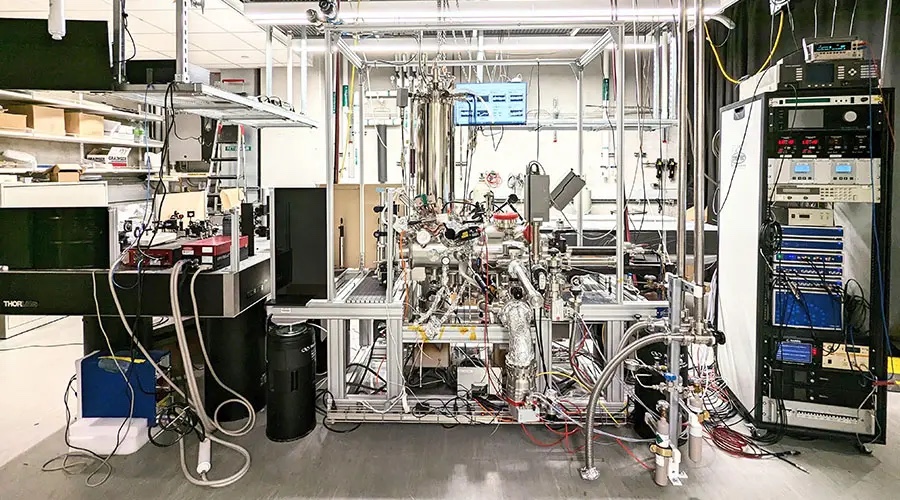 Helium may be the second-most abundant element in the universe, but on Earth it’s a finite, nonrenewable resource. Helium is so light that it’s not trapped by the lower levels of Earth’s atmosphere. And it’s extremely challenging to capture, since it’s relatively unreactive. Liquid helium is a critical ingredient in systems for cooling equipment used to study quantum systems and image atoms, as well as in the high-performance magnets used in MRI scanners and particle accelerators. But if it is not carefully contained, helium flies to the farthest reaches of the atmosphere or even out into space when it boils.
Helium may be the second-most abundant element in the universe, but on Earth it’s a finite, nonrenewable resource. Helium is so light that it’s not trapped by the lower levels of Earth’s atmosphere. And it’s extremely challenging to capture, since it’s relatively unreactive. Liquid helium is a critical ingredient in systems for cooling equipment used to study quantum systems and image atoms, as well as in the high-performance magnets used in MRI scanners and particle accelerators. But if it is not carefully contained, helium flies to the farthest reaches of the atmosphere or even out into space when it boils.
Shaowei Li, a chemist at the University of California, San Diego, says the preciousness of helium has become increasingly clear to him in over a decade working with instruments that require supercool conditions. Over that time, he’s seen the price of liquid helium rise from about $2 per liter to $20 per liter.
So Li decided to take matters into his own hands and build a system to condense and recycle helium in his lab. At the APS March Meeting in Minneapolis, Liya Bi, a graduate student working with Li, described how they did it. The UCSD team combined an air compressor, brewery equipment, and parts from a hardware store to make a relatively inexpensive system that can recapture 92% of the liquid helium used in their lab — without creating vibrations that would jar sensitive equipment.
Read the rest of this article on APSNews.
